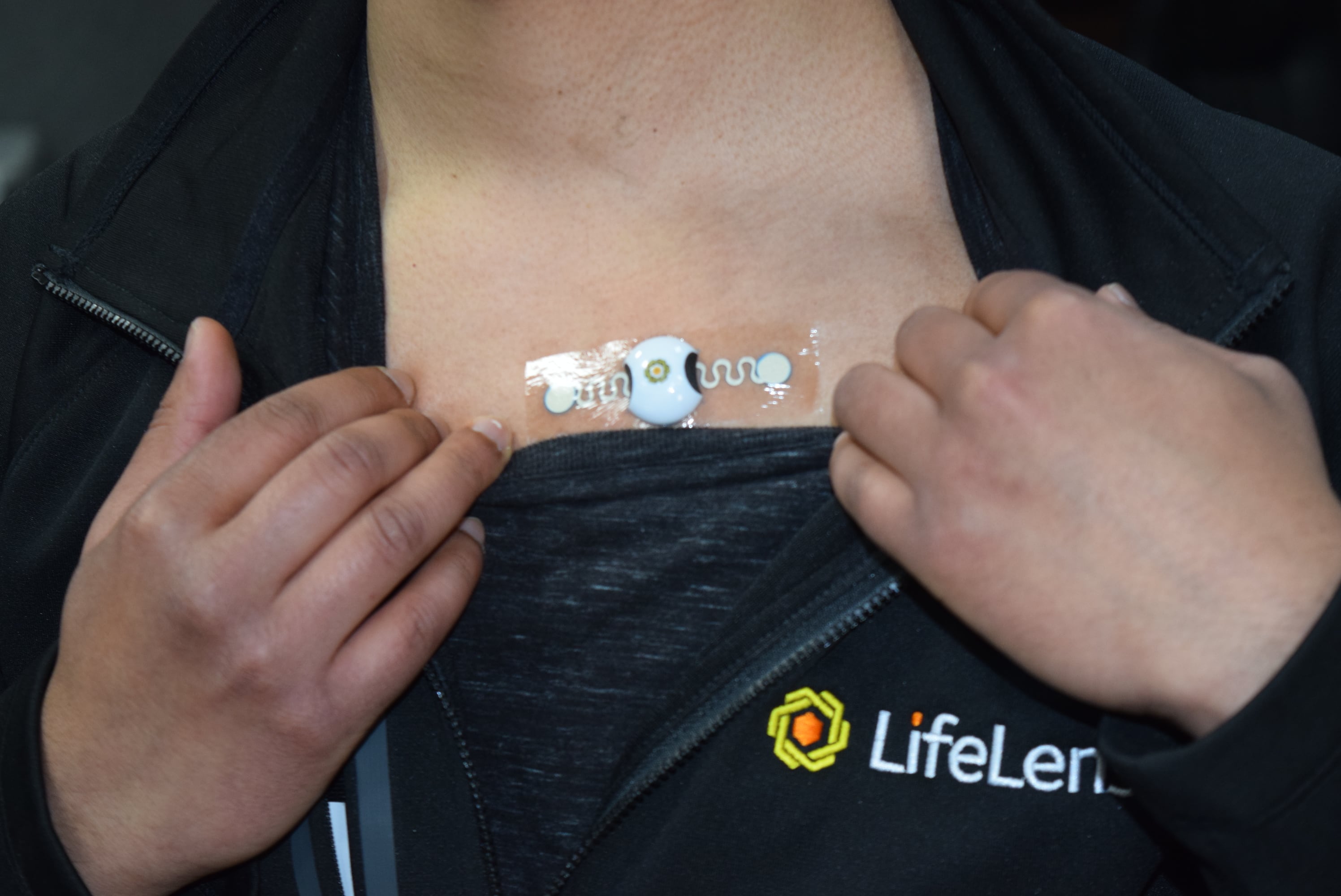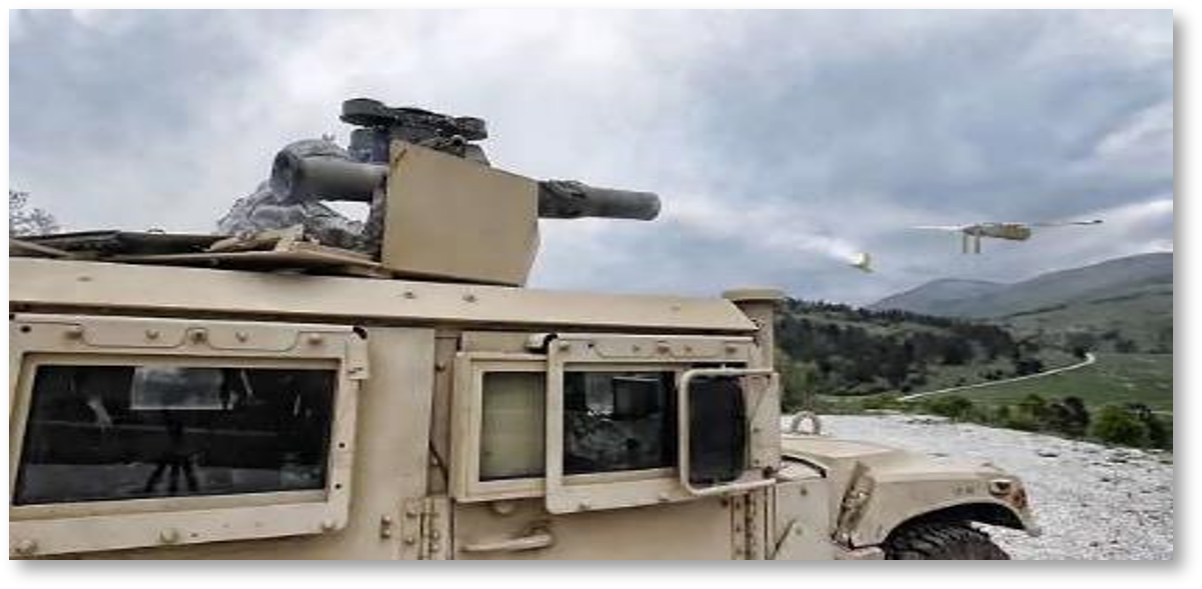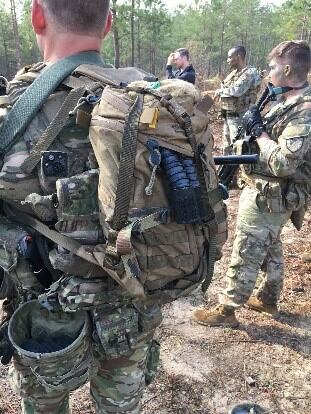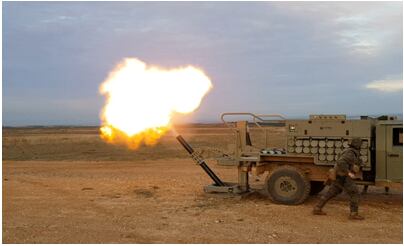Soldiers in the “blue force” set up to assault a compound. The opposing force set up an expedient minefield in their path. The blue force team began targeting their foes’ drone operators. The opposition force aimed to take out the blue force platoon leader.
The scene devolved into a shootout. And the entire episode was over in about 10 minutes.
That was just one of a range of events that planners with the Army’s Maneuver Center of Excellence at Fort Benning, Georgia, saw unfold as part of the service’s annual Army Expeditionary Warrior Experiment this past year.
From these live, force-on-force, unscripted exercises, Harry Lubin, chief of the Maneuver Battle Lab’s live experimentation branch, shared one key lesson.
“Bottom line: it is getting harder and harder to hide on the current battlefield,” Lubin said.
That previous blue force and opposition force clash unfolded into a savage shootout because soldiers didn’t have a clear way to counter opposition drones or mask themselves effectively on the battlefield.
On Tuesday, MCOE highlighted a batch of the technologies and capabilities they’ve been working with alongside government and industry entities to get after tactical, small unit and soldier problems.
Those problems need fixing to ready soldiers for what looks to be a faster, deadlier and more challenging future battlespace.
Lubin laid out some of the technologies they’ve seen in this year’s AEWE.
The presentation included everything from soldier-borne power generators that run off windshield wiper fluid to an extremely precise way to destroy an entrenched enemy with a fraction of the firepower that would typically require a mortar section.
All of the items shared are still in phases of experimentation or development. A few have cycled through AEWE in the past and been used in the Army’s big-ticket event, Project Convergence. Others recently came into the AEWE aperture and will require more work before handing it off to an Army program.
The AEWE has been running in one form or another for at least the past 15 years. In recent years, Army leaders focus the experiments on cross-domain maneuver for tactical-level units. That means synchronizing forces and capabilities in multiple domains.
So, it’s more than better bullets and new drones.

To meet that challenge, AEWE has seen artificial intelligence-driven sensors faster-firing weaponry help units step out of the shadows to fire on the enemy and then fade quickly back into the blind.
One such innovation are Ground Launch Effects, or GLE, made by Raytheon. Those are tube-launched, optically-tracked, wire-guided missiles that can loiter, providing intelligence, surveillance and reconnaissance, before striking.
More importantly, the weapon allowed units to target forces on the fly and hit a “high payoff” target list without revealing their division-level fires units, Lubin said. That small-unit ability allowed division cavalry to run screen and zone reconnaissance quickly.
While steel on target is the money-maker for maneuver forces in combat, units can’t get in the fight if they’re destroyed once their systems go live. To meet that vulnerability, the exercise used a system called “Cyberboss” to simulate electronic warfare attacks in their experiments.
Cyberboss gives soldiers a real feel for what it will take to mask themselves in the electromagnetic spectrum and also use their own EW assets against the enemy.
Back on fires, a fire-control system dubbed “Firestorm” managed sensors and shooters to hit a variety of targets from a range of platforms, Lubin said.
But to the mortar-loving soldier, one of the coolest add-ons is “Spike Firefly,” a mini-loitering drone system capable of entering doorways and windows and able to pack a warhead with the equivalent firepower of a 60mm mortar.
For perspective, Lubin noted that the standard Army tactical manual estimates that 60mm mortar rounds are needed to neutralize a platoon-sized enemy force in an entrenched position.
The Spike Firefly-warhead combo did the same task with six shots.

That falls in with the battle lab’s Squad 10X project, which aims to make an individual nine-soldier squad 10 times more lethal through added technology.
Another mortar system ratchets up larger mortar fire rates, too.
The ALAKRAN light mortar carrier lets a crew emplace, aim and shoot eight mortar rounds in less than 90 seconds, Lubin said. That’s part of its “shoot and scoot” capabilities.
A “soldier favorite” Lubin said was the new Modular Advanced Weapon Laser, which allows for infrared and visible green laser aiming and illumination for both individual and crew-served weapons. It could replace the AN/PEQ-15 if adopted and is already in use by special operators.
Connecting many of these fires and sensors and moving a small unit around a cluttered and dangerous battlespace are Robotic Autonomous Systems platoons and companies, central to humans running all of this gear.

They are constructed, systems-focused units, with standard infantry roles but enabled by robotics and sensors to do more tasks with fewer soldiers.
Those platoons are not going to be filled with highly specialized long-schooled techie soldiers. The Army aims to have these platoons filled and run by about any MOS. Right now, infantry soldiers or supply specialists with a dozen hours of training can run the autonomous resupply that keeps the unit in the fight.
But the tech at AEWE isn’t all about hitting targets or reconnoitering the area.
Soldier health is key to keeping troops going. And soldiers in some of this past year’s experiments wore a slender, adhesive sensor on their skin, about the length of a cigarette and thinner than a credit card.
That sensor allowed medics and commanders to see their heart rate, core temperature, activity level, heat strain index and breathing rate.
Leaders could track performance over time and, Lubin said, they already see potential for tracking casualty location and vital biometric data en route during a medical evacuation.
Oh, and CASEVACs are getting an upgrade if these experiments prove fruitful.

Soldiers flew a 70-pound mannequin from a wooded area over 4km in under four minutes in a test phase.
They also flew loads of gear weighing as much as 326 pounds more than 3km at speeds up to 92mph.
Experimenters didn’t forget they’ve got to fuel and power all these platforms.
A cargo trailer tinkered with during the experiments can recharge batteries, run a tethered drone and offload AC/DC power. Another individual vehicle can carry soldiers and equipment with a quiet-running, all-electric motor.
Last but not least is the “honey badger,” a windshield-wiper fluid-fueled, single-soldier wearable power generator and battery charger.
That system has been improved over at the Army’s Combat Capabilities Development Command with added venting to reduce noise and thermal signature.
Todd South has written about crime, courts, government and the military for multiple publications since 2004 and was named a 2014 Pulitzer finalist for a co-written project on witness intimidation. Todd is a Marine veteran of the Iraq War.





